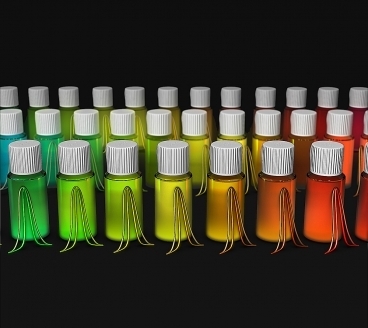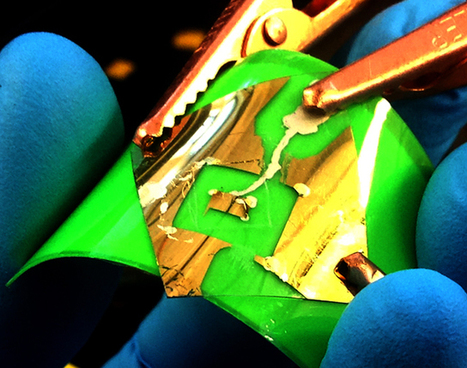New MIT analysis should enable development of improved color displays and biomedical monitoring systems. The new method — called photon-correlation Fourier spectroscopy in solution — makes it possible to extract single-particle spectral properties from a large group of particles. While it doesn’t tell you the spectral peak width of a specific particle, it does give you the average single-particle spectral width from billions of particles, revealing whether the individual particles produce pure colors or not.
In addition, the particles “are not isolated on a surface, but are in their natural environment, in a solution. With the traditional methods, there’s always a question: How much does the surface affect the results?
The method works by comparing pairs of photons emitted by individual particles. That doesn’t tell you the absolute color of any particular particle, but it does give a representative statistical measure of the whole collection of particles. It does this by illuminating the sample solution with a laser beam and detecting the emitted light at extremely short time scales. So while different particles are not differentiated in space, they can be differentiated in time, as they drift in and out of the narrow laser beam and are turned on by the beam.
By applying this method to the production of quantum dot nanocrystals, the MIT team can determine how well different methods of synthesizing the particles work.
“It was an open question whether the single-dot line widths were variable or not,” Cui says. Now, he and his colleagues can determine this for each variation in the fabrication process, and start to fine-tune the process to produce the most useful output for different applications.
In addition to computer displays, such particles have applications in biomedical research, where they are used as staining agents for different biochemicals. The more precise the colors of the particles are, the greater the number of different colored particles that can be used at once in a sample, each targeted to a different kind of biomolecule.
Using this method, the researchers were able to show that a widely used material for quantum dots, cadmium selenide, does indeed produce very pure colors. But, they found that other materials that could replace cadmium selenide or produce different colors, such as indium phosphide, can also have intrinsically very pure colors. Previously, this was an open question.
Todd Krauss, a professor of chemistry at the University of Rochester who was not involved in this research, says the MIT team’s “approach is very clever and builds on what this group has done previously.” Measuring the line widths of individual particles is important, he says, in optimizing applications such as television displays and biological markers. He adds, “We should be able to make much better strides now that this technique is published, because of the ability to get single-particle line widths on many particles at once.”
Via Dr. Stefan Gruenwald



 Your new post is loading...
Your new post is loading...










